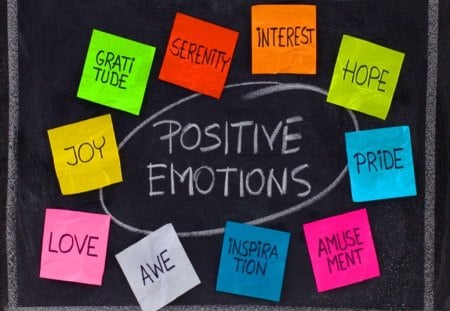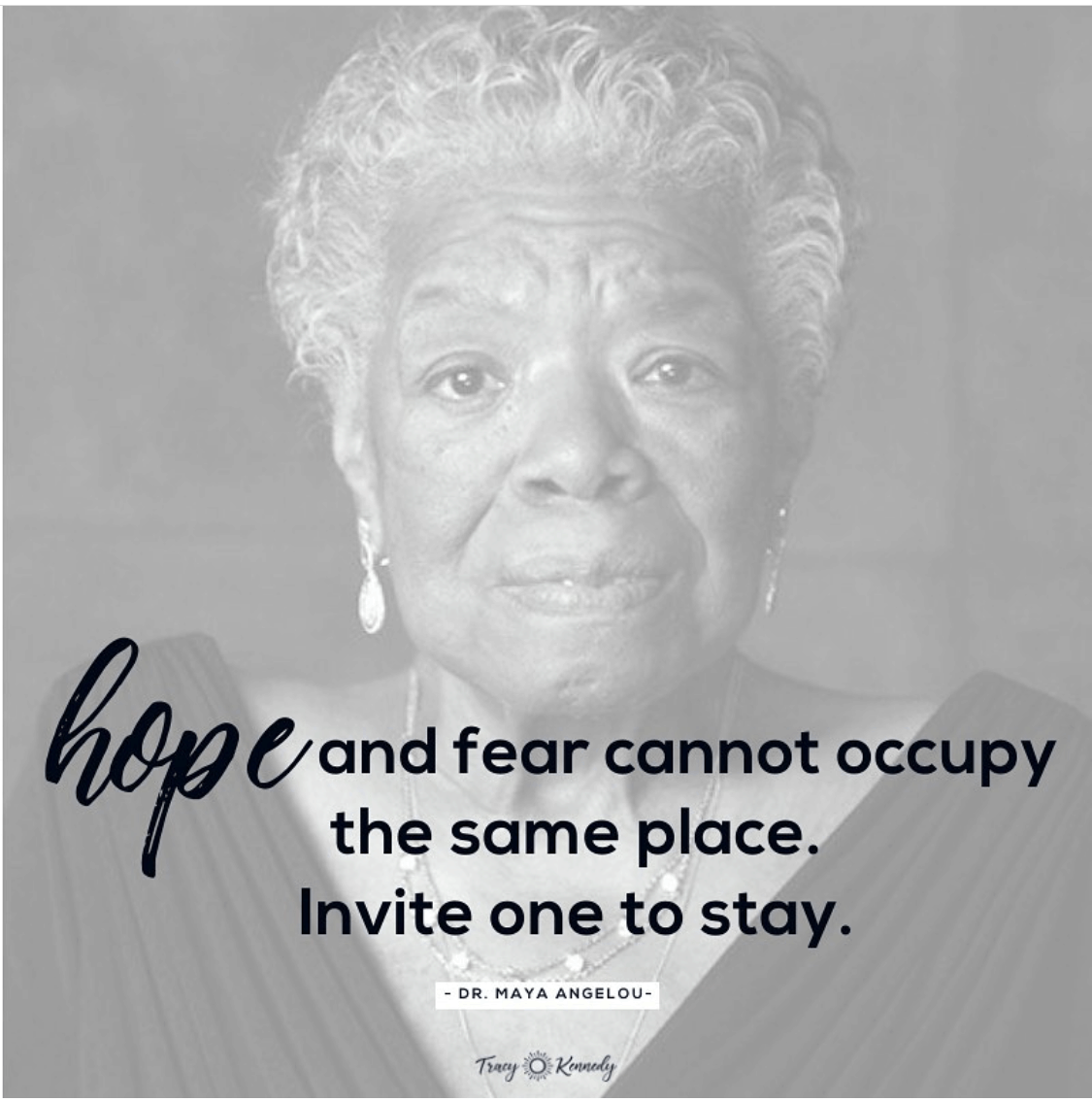A survey done by the CDC showed the significant effect the COVID-19 pandemic has had on mental health: 40% of adults reported struggling with mental health including anxiety/depressive symptoms, trauma/stressor-related disorders, increased substance abuse and suicidal thoughts.[1] If you’re feeling scared, lonely, sad, or down, you are not the only one. There are many things out of your control – the pandemic, natural disasters, heated politics, and unemployment, to name a few. You are not alone, but you alone can control your emotions. With the right strategies and an understanding of why positivity is so critical, each day can be better. In the words of Viktor Frankl, If you have not read Man’s Search for Meaning, I highly recommend you read it now. You have the power to control what’s going on inside you. I’m not suggesting you ignore what’s going on in the world and look for only sunshine and rainbows. I’m also not suggesting ‘good vibes only’ and ignoring the current state of affairs. That is toxic positivity. I am suggesting that instead of holding tight and waiting for 2020 to end (will things really be different on January 1st anyway?), you choose to make the most of every day you are given. How? By actively and intentionally bringing positive emotions into each day.
What Really Are Emotions?
Emotions, both positive and negative, are a natural instinctive state of mind deriving from one’s circumstances, mood, or relationships with others. While very complex in nature, they are usually feelings that happen within us as a result of something we experience internally or externally. You read something in the news and feel sad, angry, or fearful. You see someone you love and feel joy or happiness. You remember a time that someone showed you generosity or kindness and feel grateful. Emotions play a critical role in our lives. Even negative emotions have a role and benefit. However, too many negative emotions can have a dramatic impact on our life, health, and well-being so it is critical (especially now) to find ways to keep our emotions in balance. The Losada ratio, also known as the critical positivity ratio, is a 3:1 rate of positive to negative emotions. You may have heard of a similar 5:1 ratio for successful and happy relationships. The Gottman Institute states,[2] Regardless of 1:3 or 1:5, the sentiment is the same. In order for us to experience happy, positive lives and relationships and feel more in control, we must have a greater ratio of positive emotions to negative ones.
The Benefits of Positive Emotions
Positive emotions are associated with advantageous physical and psychological health outcomes.[3] These include enhancing our immune system, physical health, longevity, mental health, resilience, coping skills, and overall well-being. Think about a time you felt a positive emotion such as joy or love. What happened? Perhaps a smile came across your face. Maybe you felt a shift in your energy. Perhaps you felt a sense of peace or a rush of excitement. Regardless of the scenario, it likely felt good. And those feelings likely had positive effects on your productivity, energy, and momentum. There’s a good reason for these outcomes and their subsequent domino effects. It’s called the Broaden-and-Build Theory.[4]. The key premise is that:
YOU Can Flip the Switch
Take a moment to consider this: If emotions happen as a reaction to something, then you can feel positive emotions any time you want by simply creating the right stimulus to generate the feeling you are looking for. In Jill Boyle’s book Stroke of Insight, she shares the 90-second rule: You have the power to change the emotional loop that you are experiencing. Zach Bush, triple board-certified MD states, Positive emotions aren’t just something you have to wait around for. They aren’t only created by positive events and moments in our lives. They’re something you can generate. You have the opportunity every single day to evoke these emotions. Here’s how.
How to Generate Positive Emotions
Barbara Fredrickson, the creator of the Broaden-and-Build theory, is a leader in researching emotions and positive psychology. In her work, she identified the ‘big 10 positive emotions”. We can use these as a basis for how to evoke positive emotions for yourself on a daily basis.
As you read these, challenge yourself to think about positive emotions in a different way. It’s not just about being ‘happy’. Take some time to consider these emotions on a deeper level.
Love
Maslow defines love as a basic human need. Close intimate bonds make us feel safer, happier, and more connected. Evoke Love: One of the simplest ways to conjure up feelings of love is to hug your kid, spouse or pet. Hugging boosts your oxytocin levels (the love hormone) and increases serotonin (elevates mood and creates happiness). Find someone – or something – to hug for at least 30 seconds – it’s quick and easy and will put you in a more positive mood.
Joy
Joy is defined as a feeling of great pleasure and happiness. Think about a time when you saw a wide-eyed child chasing bubbles or two puppies gleefully playing. You can experience joy at any moment by simply remembering a time when you felt a great sense of joy. Evoke Joy: Close your eyes and think of a time when you felt joy. Put yourself back in that moment. Take a breath, let it sink in, and feel the joy from deep within you. Notice what you see, hear, and feel. Your brain doesn’t know the difference between what is real and what is not, so if you picture something that brings you joy, your mind will feel that is real and you will experience all of the great benefits that come with those positive emotions.
Gratitude.
Gratitude is alchemy. Being intentionally and overtly grateful is one of the simplest and most powerful things you can do to live a full and happy life. There’s a reason why people say ‘Count your blessings’.[5] Evoke Gratitude: You can always find something to be grateful for. Right now, identify 3 things you feel thankful for. Better yet, start a daily gratitude practice: 40 Simple Ways To Practice Gratitude
Serenity
Serenity is the state or quality of being serene, calm or tranquil. Read those words again slowly and feel them; you may already feel more at ease. Evoke Serenity: You can create this feeling through meditation, a walk-in nature, music, grounding, breathwork, and mindfulness. Even looking at serene images, like a peaceful lake or snow falling can instantly take your mind to a place of calm.
Interest
We are here to grow, learn, and expand, so it’s no wonder that interest creates a feeling of positivity. It uses your cognitive capacity, creates a sense of expansion, and opens your mind. We spend so much time doing the things we have to do that we often don’t spend enough doing the thing we are interested in doing. Evoke Interest: Identify one thing today that makes you feel curious, something that intrigues you or creates a sense of wonder. Set aside time to explore this interest further. Enroll in an online course, watch a TED talk, or have a cup of coffee and learn from someone you admire.
Hope
Hope is believing that something is possible. It keep your mind open to opportunities or options instead of closing them off. I recently had a client diagnosed with an autoimmune disease. She felt defeated, stuck and hopeless. However, she heard a doctor speak about his methodologies for addressing autoimmune issues and felt hope immediately. That hope spurred her to join a health coaching program and gave rise to a new belief that healing was possible. Evoke Hope: Hope is ultimately about having a sliver of belief that things can be different. Shane Lopez, author of Making Hope Happen, says that while some people are more wired for hope, it can be learned. Hopeful people share these four beliefs. [6] You can, too.
Pride
Just today, I called a friend to ask for her advice. She has had a difficult few months with significant medical challenges. As we talked and she provided some amazing ideas, I commented how thankful I was for her insight and support. Her energy immediately shifted. Why? Because she felt proud. She had contributed to something meaningful to me and that felt good to her. Think of something you feel proud of. What happens in your body? Maybe your head lifts, your chest rises, you feel stronger and more capable? Evoke Pride: Harness the power of pride by acknowledging your wins and accomplishments. Every day for the next 30 days, list three things that you achieved that day or make you feel proud. This can be as simple as making your bed or as significant as a promotion at work.
Amusement
Amusement is when we find something entertaining or funny. We all know that laughing makes us feel good. In fact, it’s been proven that laughter has a multitude of significant health benefits, including soothing tension, relieving pain, and improving your mood.[7] Evoke Amusement: Find things that make you laugh or smile. Read a funny book, play with your kids, watch a silly movie, or look up news bloopers or ‘try not to laugh’ videos on YouTube.
Inspiration
Someone once told me that the word inspired comes from the Latin word ‘in spirit’ which I’ve always really loved the notion of. Turns out that’s not entirely true. It comes from the Latin root inspirare which means ‘to breathe or blow into.’ [9] If you think of inspiration, it is literally breathing life into you. Evoke Inspiration: Think of something or someone you feel motivated or uplifted by. Read a book or article by someone who has a knack for lighting your fire. Watch a TED talk on a topic you feel moved by.
Awe
When was the last time you felt awe? Awe is what you feel when you are deeply amazed by something. It’s a sense of wonder you can have anywhere if you are intentionally looking. I find awe in the magnitude and beauty of nature, the wisdom of a child, and the talents of human beings. Evoke Awe: Nature is one of the greatest gifts of awe. Head out to your local forest, beach, park, mountain, or backyard and take in the beauty of nature – from little bugs to the grandest mountains, the enormity of the sea, to the wonder of the stars and universe.
The Pleasant Life, The Good Life, and the Meaningful Life
Life’s not just all about positive emotions. Positive psychology is the scientific study of the ‘good life’, or the positive aspects of the human experience that make life worth living.[8] In his TED talk, Martin Seligman, one of the founders of positive psychology talks about “three different happy lives”. The pleasant life is about having as many pleasures and positive emotions as you can. The good life is about being in flow – knowing what your highest strengths are and using those as much as you can. The meaningful life is knowing your highest strengths and using them in the service of something larger than yourself. If you want to learn more about this, find out in Martin’s TED Talk: So if you want to truly flourish and feel long-lasting satisfaction and fulfillment, don’t focus solely on emotions and a more pleasurable life. Focus also on having a more engaged and meaningful life through fulfilling your purpose and your contribution to the world.
Final Thoughts
Now more than ever, we could all use a little more James Brown’s “I Feel Good” energy. Even when the world feels dark and heavy, it’s important to know that it’s okay to feel good. Many people feel bad or guilty for feeling upbeat when you or others are suffering; but what good does it do yourself and those around you if you stay stuck in this state of mind? You have permission, in fact, you have a responsibility, to feel good, do good and be the best version of yourself. Great changes in history never occurred through negativity and resignation, but through hope and optimism that things could be different. And it’s times like these it becomes even more critical that we find that positivity, tap into our collective strength, resilience, and optimism and power through. Every day, you have the choice and the opportunity to identify which of these positive emotions you will embrace. Then, stand back and notice the ripple effect this has on you and those around you – it is truly a gift.
More About Positive Thinking
Positive Motivation vs Negative Motivation: Which One Is Better? 11 Positive Thoughts for Your Everyday Motivation How to Think Positive Thoughts When Feeling Negative
Featured photo credit: Antonino Visalli via unsplash.com


